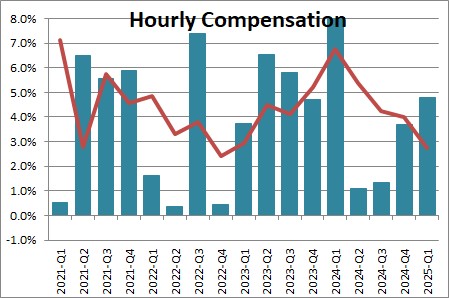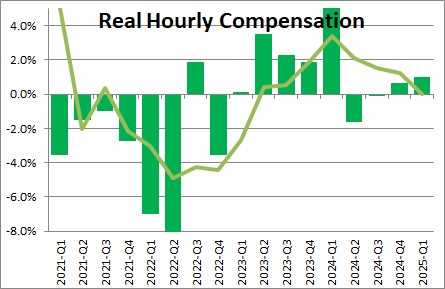May 8, 2025

The Bureau of Labor Statistics indicated that hourly compensation rose 4.8% in the first quarter after climbing 3.7% in the fourth quarter. In the past year compensation has risen 2.7%.
Growth in hourly compensation is a good thing, but that increase can be offset by inflation. So what we are also interested in is real hourly compensation. In the first quarter real compensation increased 1.0% after increasing 0.6% in the fourth quarter. In the past year real compensation has been unchanged. The fourth quarter increase consisted of a 4.8% increase in compensation which was partially offset by a 3.8% increase in inflation, hence a 1.0% increase in real compensation. If the labor market remains relatively tight, real compensation should continue to climb in the quarters ahead. Real compensation declined steadily through 2021 and 2022. Workers are beginning to regain some of the compensation that they lost during that period.

Stephen Slifer
NumberNomics
Charleston, SC

Follow Me